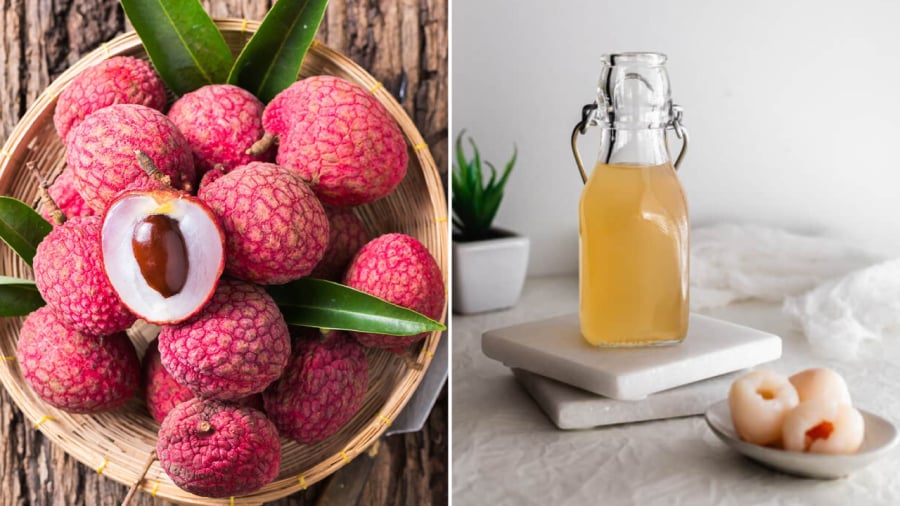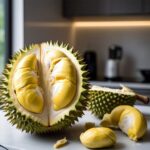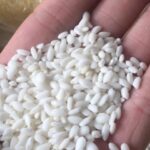Summer is the perfect time to indulge in the deliciousness of lychees. These juicy fruits are in abundance during this season, and you can find them everywhere. While lychees are fantastic on their own, they can also be used in a variety of ways: from ice cream and yogurt to refreshing chilled soups and even vinegar.
Lychee vinegar, like other fruit-based vinegars, is a delicious and healthy condiment. It has a unique flavor and is rich in nutrients. Making your own lychee vinegar at home is simple and allows you to capture the essence of summer in a bottle.
To make lychee vinegar, you’ll need the following ingredients:
Ingredients for Lychee Vinegar
The star of the show is, of course, fresh lychees. Look for ripe, sweet lychees that are free from any damage. Varieties such as Thanh Ha (from Hai Duong) or Luc Ngan (from Bac Giang) are excellent choices.
For every kilogram of lychees, you’ll need about 300 grams of rock sugar or white sugar. Additionally, have around 1.5–2 liters of boiled and cooled water ready.
To speed up the fermentation process, you can use a tablespoon of natural vinegar starter or “mother of vinegar.” Alternatively, a small amount of apple cider vinegar or pineapple vinegar will do the trick. These ingredients are not mandatory but will help accelerate the fermentation.
As for equipment, opt for clean glass jars or bottles with lids. Avoid plastic containers to prevent any toxic chemicals from leaching into the vinegar during fermentation. Make sure to sterilize the glass containers by washing them with soap and hot water, then rinsing them with boiling water.
Feel free to adjust the ingredient quantities based on how much vinegar you want to make, using the above ratios as a guide.
Step-by-Step Process for Making Lychee Vinegar
Start by washing the lychees and letting them air dry. Then, peel the lychees and remove the seeds, retaining only the fleshy part.

In a pot, combine the rock sugar with water and heat gently until the sugar is completely dissolved. Allow the sweetened water to cool down. If using white sugar, you can simply mix it with the boiled and cooled water.
Place the lychee flesh into the glass jar or bottle. Pour in the sweetened water, ensuring the lychees are fully submerged. Add the vinegar starter or apple/pineapple vinegar to kickstart the fermentation process.
Cover the mouth of the jar with a thin cloth, securing it with a string or rubber band. This allows airflow while keeping insects out. Loosely place the lid on top. Store the jar in a cool, dry place, away from direct sunlight.
The ideal temperature for fermentation is between 25–30°C (77–86°F). It will take around 20–30 days for the vinegar to fully ferment.
How to Know If Your Lychee Vinegar Is Ready
After about a week, you’ll notice that the liquid in the jar has turned a pale yellow color. It will have a subtle lychee fragrance and a mild sour taste.
Around the 20–30-day mark, the vinegar will become clearer. Taste it, and you’ll find a pleasant sourness with a hint of sweetness, along with a delightful aroma.
During fermentation, a thin, white film may appear on the surface. This is normal and indicates the presence of the “mother of vinegar,” which is a sign of successful fermentation. You can reserve some of this “mother” for future batches of vinegar.

If you notice any mold (green or black) or an unpleasant rotten fruit smell, discard the batch as it has gone bad. Additionally, if you see excessive bubbling or foam, it’s best to start over.
It’s important to keep the lid loose during the initial fermentation phase to allow air circulation and prevent the growth of anaerobic bacteria.
Avoid using bruised or overly sour lychees, as well as those that have started to ferment on their own.
Storing Your Homemade Lychee Vinegar
Once the vinegar has reached your desired level of sourness, strain it to remove the lychee solids. Pour the vinegar into smaller bottles or jars for ease of use. Tighten the lids and store them in a cool, dry place or in the refrigerator for longer shelf life. Your homemade lychee vinegar will last for about 6–12 months.

Lychee vinegar is incredibly versatile. Use it in dressings, marinades, or even in cocktails for a unique twist. With summer approaching, now is the perfect time to experiment with this fruity, flavorful vinegar.














